Upon facing rows and rows of olive options at the supermarket, or a rainbow display at a restaurant table, you may feel unsure of which ones to choose. This feeling is understandable, for there are different names, regions of origin and methods of preparation for each type of olive. While we may think olives are just empty calories added to martinis, pizzas and breads, they’re actually healthy snacks that can fulfill a salt craving. Full of Vitamin A and E, a cup of this fruit (yes, they are fruit) is only about 155 calories. Below is your go-to guide to olives, so that next time you’re schmoozing and the waiter comes along with an olive hors d’oeuvres platter, you’ll choose your olives with ease.
Niçoise
Grown in the French Riviera, these small, deep brown olives are harvested ripe and take six months to cure. Served with the pit, they have a nutty rich flavor and, as the name suggests, are often found in Niçoise salads. They taste great paired with shredded Parmigiano-Reggiano atop a piece of fish.

Nicoise olives. Photo by Lily Allen
Kalamata
Named after the Greek city they are grown in, these olives are deep purple in hue, plump, almond-shaped and harvested ripe. Often used to make tapenade, their rich, fruity flavor also complements salad and pasta dishes.
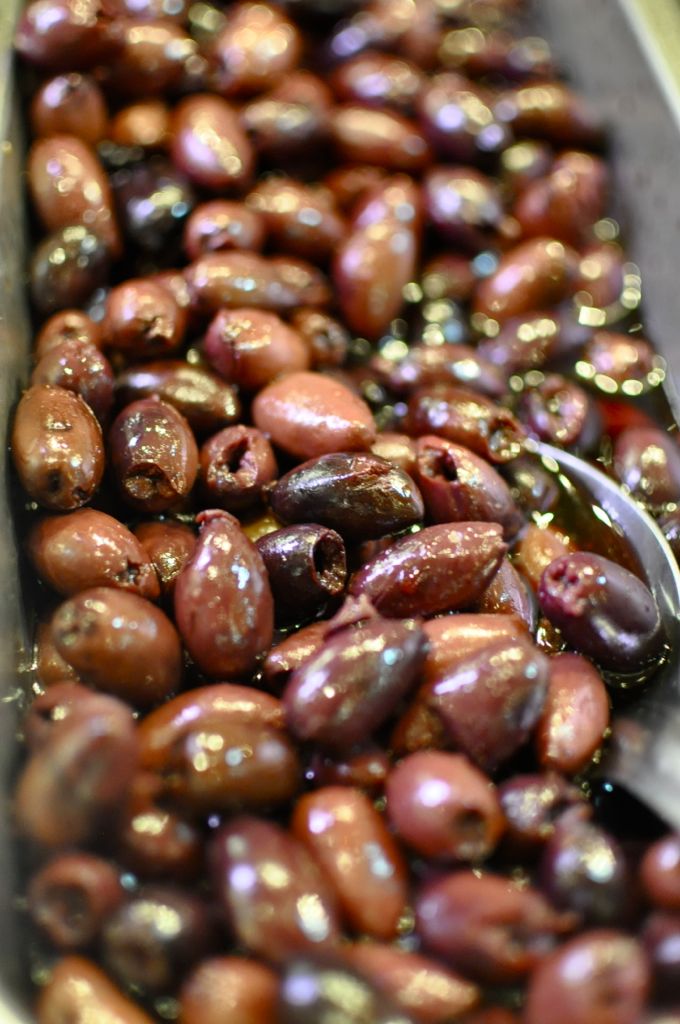
Kalamata olives. Photo by Lily Allen
Gaeta
Native to Italy, these olives are aged for about 8 months in water and salt, unlike many of their counterparts that are cured in olive oil. They are wrinkled in appearance and possess a mild flavor.
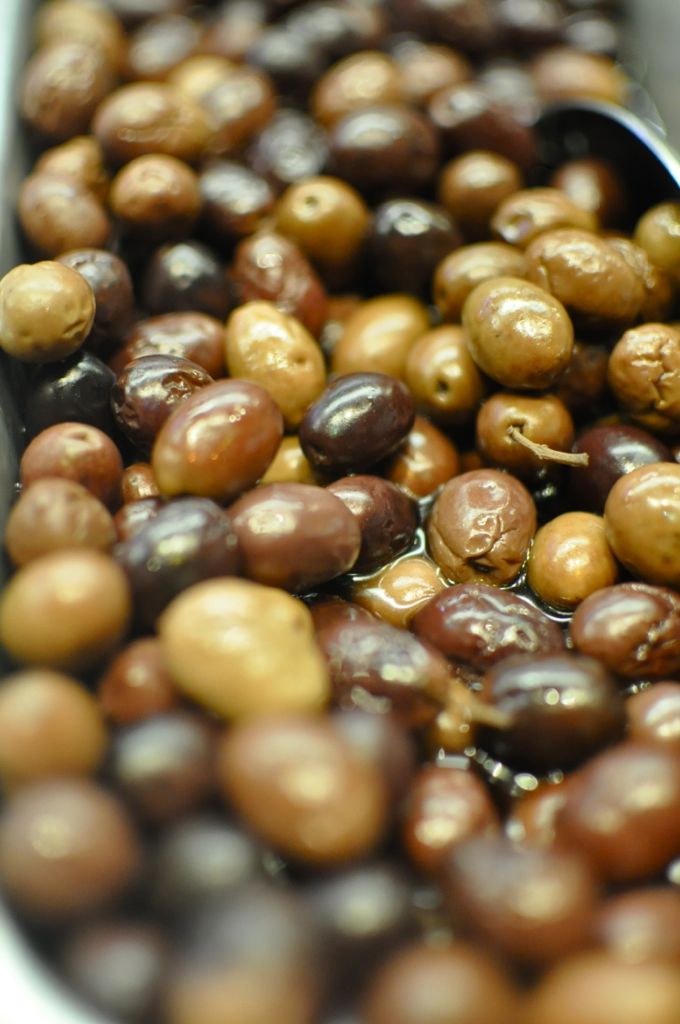
Gaeta olives. Photo by Lily Allen
Cerignola
Grown in Apulia, just outside their namesake town of Cerignola, these olives are largest in size compared to other olive types. Sold with the pit, this green olive has a firm texture and acts as a great addition to any antipasti dish, especially with cured meats like salami. Because of its large size, it’s often pitted and stuffed with cheese or sun-dried tomatoes. There are also black varieties which have a softer texture.
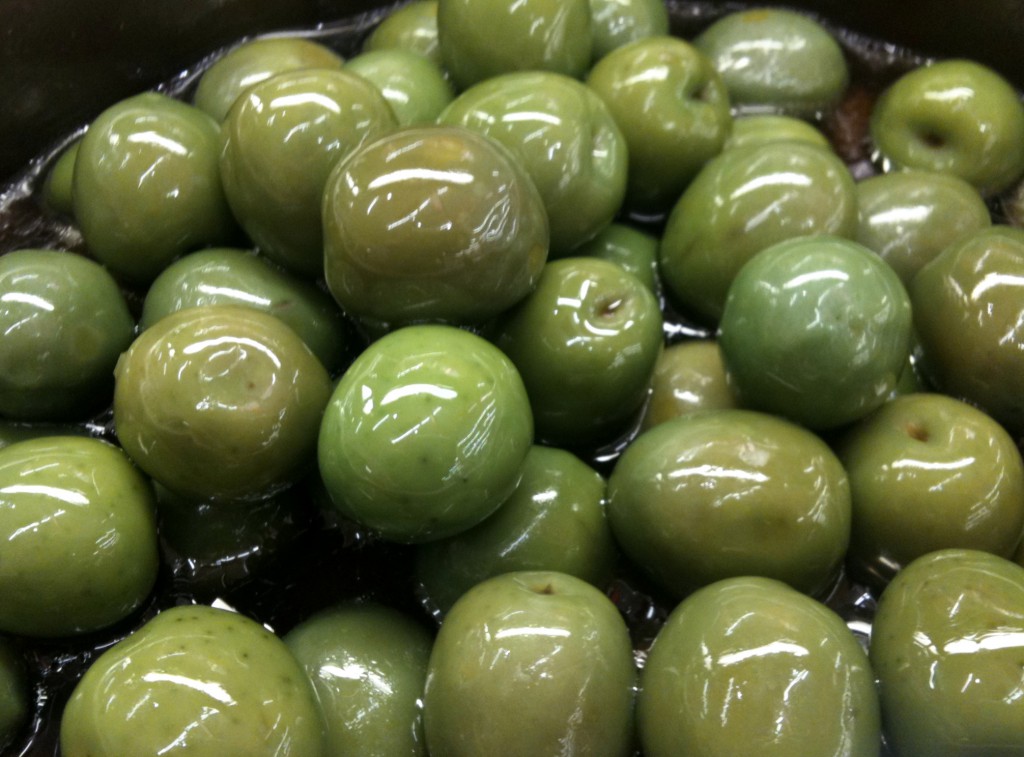
Cerignola olives. Photo courtesy of olivecrazy.com
Manzanilla
This green, medium-sized Spanish olive is grown in Spain and California and is available year-round. It is brine-cured and has a firm texture, which is why it’s often pitted and stuffed with garlic or pimento, which is a red cherry pepper. Manzanilla olives are commonly used in martinis.
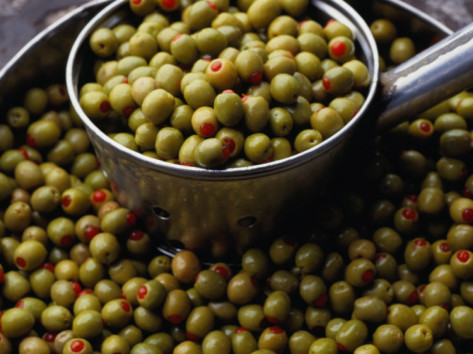
Manzanilla olives. Photo courtesy of allposters.com
Sicilian Green
Similar to the Manzanilla olive, this large, green, sour olive is firm in texture and usually pitted and stuffed. These Mediterrean olives are one of the healthiest options, for they contain fewer calories than other olives, particularly black oily ones.
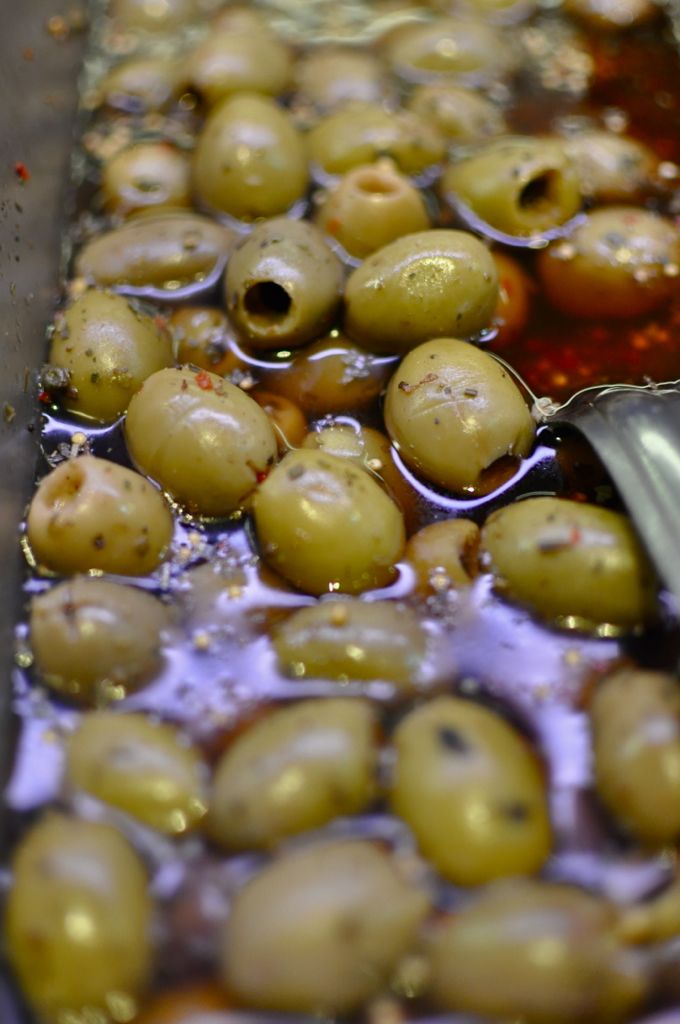
Sicilian green olives. Photo by Lily Allen

